

Hans Richter
Born: April 6, 1888
Died: February 1, 1976
in Berlin, Germany
Died: February 1, 1976
in Berlin, Germany
Richter's first contacts with modern art were in 1912 through the "Blaue Reiter" and in 1913 through the "Erster Deutscher Herbstsalon" gallery "Der Strum", in Berlin. In 1914 he was influenced by cubism. He contributed to the periodical Die Aktion in Berlin. His first exhibition was in Munich in 1916, and Die Aktion published as a special edition about him. In the same year he was wounded and discharged from the army and went to Zürich and joined the Dada movement.
Richter believed that the artist's duty was to be actively political, opposing war and supporting the revolution. His first abstract works were made in 1917. In 1918, he befriended Viking Eggeling, and the two experimented together with film. Richter was co-founder, in 1919, of the Association of Revolutionary Artists at Zürich. In the same year he created his first Prélude (an orchestration of a theme developed in eleven drawings). In 1920 he was a member of the November group in Berlin and contributed to the Dutch periodical De Stijl.
Throughout his career, he claimed that his 1921 film, Rhythmus 21, was the first abstract film ever created. This claim is not true: he was preceded by the Italian Futurist Bruno Corra and Arnaldo Ginna between 1911 and 1912 (as they report in the Futurist Manifesto of Cinema), as well as by fellow German artist Walter Ruttmann who produced Lichtspiel Opus 1 in 1920. Nevertheless, Richter's film Rhythmus 21 is considered an important early abstract film.
Richter moved from Switzerland to the United States in 1940 and became an American citizen. He taught in the Institute of Film Techniques at the City College of New York. While living in New York City, Richter directed two feature films, Dreams That Money Can Buy (1947) and 8 x 8: A Chess Sonata in 8 Movements (1957) in collaboration with Max Ernst, Jean Cocteau, Paul Bowles, Fernand Léger, Alexander Calder, Marcel Duchamp, and others, which was partially filmed on the lawn of his summer house in Southbury, Connecticut.
In 1957, he finished a film entitled Dadascope with original poems and prose spoken by their creators. After 1958, Richter spent parts of the year in Ascona and Connecticut and returned to painting. In 1963, he directed the short film "From the Circus to the Moon" on the American artist Alexander Calder.
Richter died in Minusio, Switzerland in 1976.
Richter believed that the artist's duty was to be actively political, opposing war and supporting the revolution. His first abstract works were made in 1917. In 1918, he befriended Viking Eggeling, and the two experimented together with film. Richter was co-founder, in 1919, of the Association of Revolutionary Artists at Zürich. In the same year he created his first Prélude (an orchestration of a theme developed in eleven drawings). In 1920 he was a member of the November group in Berlin and contributed to the Dutch periodical De Stijl.
Throughout his career, he claimed that his 1921 film, Rhythmus 21, was the first abstract film ever created. This claim is not true: he was preceded by the Italian Futurist Bruno Corra and Arnaldo Ginna between 1911 and 1912 (as they report in the Futurist Manifesto of Cinema), as well as by fellow German artist Walter Ruttmann who produced Lichtspiel Opus 1 in 1920. Nevertheless, Richter's film Rhythmus 21 is considered an important early abstract film.
Richter moved from Switzerland to the United States in 1940 and became an American citizen. He taught in the Institute of Film Techniques at the City College of New York. While living in New York City, Richter directed two feature films, Dreams That Money Can Buy (1947) and 8 x 8: A Chess Sonata in 8 Movements (1957) in collaboration with Max Ernst, Jean Cocteau, Paul Bowles, Fernand Léger, Alexander Calder, Marcel Duchamp, and others, which was partially filmed on the lawn of his summer house in Southbury, Connecticut.
In 1957, he finished a film entitled Dadascope with original poems and prose spoken by their creators. After 1958, Richter spent parts of the year in Ascona and Connecticut and returned to painting. In 1963, he directed the short film "From the Circus to the Moon" on the American artist Alexander Calder.
Richter died in Minusio, Switzerland in 1976.
Movies for Hans Richter...
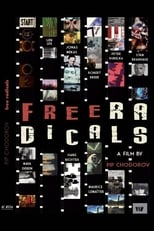
Title: Free Radicals: A History of Experimental Film
Character: Himself (archive footage)
Released: July 24, 2011
Type: Movie
Experimental filmmaker Pip Chodorov traces the course of experimental film in America, taking the very personal point of view of someone who grew up as part of the experimental film community.


Title: A Visit To Hans Richter
Character: himself
Released: December 31, 2003
Type: Movie
This piece had its world premiere as the opening film of the Hans Richter Tribute at Cinema Arsenal in the summer of 2003. The nine minutes of film are a compilation of all appearances of Hans Richter in Jonas’s films. The result is a new work, a singular contemporary document, which does not only capture Hans Richter, but shows him embedded in his environment.

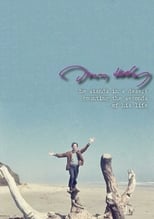
Title: He Stands in a Desert Counting the Seconds of His Life
Character: Self
Released: February 22, 1986
Type: Movie
A film collage tracing the story of the lives, loves, and deaths within the artistic community surrounding Jonas Mekas.

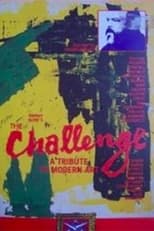
Title: The Challenge... A Tribute to Modern Art
Character: Self
Released: December 5, 1974
Type: Movie
The Challenge... A Tribute to Modern Art is a 1974 American documentary film directed by Herbert Kline. The film shows footage of great modern artists in their studios creating and commenting on their work, with narration and commentary by Orson Welles. It was nominated for an Academy Award for Best Documentary Feature.


Title: Index – Hans Richter
Released: November 14, 1973
Type: Movie
Dedicated to Nigel Gosling. Voice-over with Hans Richter reading a Dada text. Filmed in Locarno.
Oesterreichisches Filmmuseum, Vienna


Title: Ich lebe in der Gegenwart - Versuch über Hans Richter
Released: September 23, 1973
Type: Movie

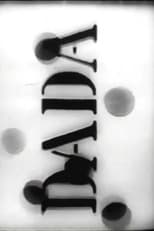
Title: Dada
Released: October 1, 1969
Type: Movie
1967 film directed by Greta Deseson about the Dada art movement. Featuring Marcel Duchamp, Man Ray, Max Ernst, Hans Richter and Gabrièle Buffet-Picabia

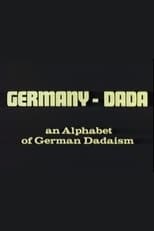
Title: Germany Dada
Character: Himself
Released: March 1, 1969
Type: Movie
This documentary concerns the contributions of German artists to the Dadaist movement. Created in 1916, the organizers rejected previous convention and delighted in nihilistic satire in painting, sculpture and literature. Comparisons are made between the movement and the political and social upheaval at the time of the release of this feature (1969).


Title: Diaries, Notes, and Sketches
Character: Self
Released: March 1, 1968
Type: Movie
An epic portrait of the New York avant-garde art scene of the 60s.

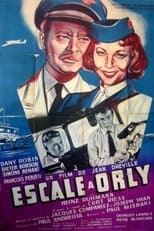
Title: Intermediate Landing in Paris
Released: March 16, 1955
Type: Movie
Michèle, an employee at the airport, is in love with American pilot Eddie Miller who regularly flies the route from New York to Paris, but problems arise when he is transferred to the Tokyo route. Meanwhile Michèle's uncle Albert who works in the freight department sets out to tackle a drug trafficking outfit.




Title: The Storming of La Sarraz
Character: General Tilly
Released: January 1, 1929
Type: Movie
A farcical war between the forces of Commercial Cinema and Independent Cinema.


Title: Ghosts Before Breakfast
Released: July 14, 1928
Type: Movie
Hans Richter, noted for his abstract shorts, has everyday objects rebelling against their daily routine.
